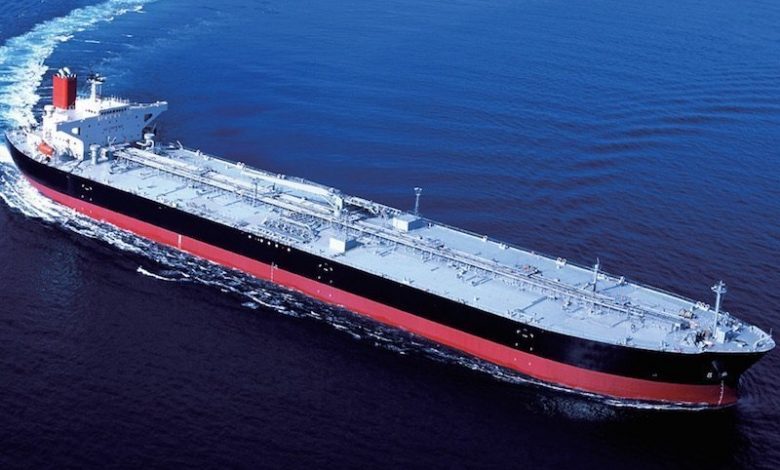Who ate my tanker supercycle?

In this exclusive extract from Splash Extra, our analyst looks at why the longed-for supercycle never showed up.
The International Energy Agency (IEA) ventured in March that China’s oil imports would reach 11.8m barrels per day this year compared to 10.2m barrels per day last year. Crude oil imports officially totalled 515.65m tonnes from January to November, equal to 10.99m barrels per day. This was a 12% increase year-on-year but was not by itself enough to drive the VLCC freight market to anticipated heights. Chinese refiners have enjoyed selling oil products overseas, especially in the first half of the year, as cheap crude from Russia could be processed into highly profitable gasoil, maxing out export quotas.
The US has raced ahead of Russia and Saudi Arabia to become the world’s leading oil producer. The US government reported 4.75m barrels per day of exports in mid-November while tanker tracking analysts suggested that by the end of November Uncle Sam was exporting 6m barrels per day of crude oil. These numbers make the US a top five exporter, as WTI is regularly priced at a discount to OPEC benchmark blends and at around $70 a barrel in early December was only $10 dearer than the imposed price limit on Russian oil exports. And yet this change in global tanker dynamics has not been enough by itself to spark a freight supercycle.
Freight markets demonstrate that oversupply is still the default position
Geopolitical disruption has contributed to volatility in tanker freight markets this year. The war in Ukraine, the dark fleet, attacks on shipping in the Red Sea, and even the Nigerian freight tax have all contributed to a sometimes bewildering variability in earnings. But these have tended to drive occasional spikes in suezmax and aframax earnings, with the half-million barrel ships out-earning their larger sisters for much of the year.
Between Jan 1 and November 30, the Baltic Dirty Tanker Index moved from 1,499 points via a peak of 1,648 points on March 22 and a low of 713 points on September 8 to 1,184 points, just above the year-to-date average of 1,151 points. From a statistical perspective, earnings were not particularly volatile in 2023. VLCCs, basis the Baltic Exchange, have earned an average of $22,818 this year, the best since the pandemic, but not enough to pay down much capital on a modern eco-vessel. Fortunately, most brokers would rate earnings at rather higher levels for modern, scrubber-fitted tonnage – an average closer to $35,000 would be more relevant. For suezmaxes, around $28,000 a day and for aframaxes around $33,000 a day would be close to the mark. The best guide to the health of the market may be the listed tanker companies’ annual reports when they appear in Q1.
The Baltic Clean Tanker Index started 2023 at 1,304 points, which turned out to be the year-to-date peak. It bottomed out at 563 points on July 18 and by early December had recovered to around 830 points, a bit ahead of the year-to-date average of 796 points. Basis Baltic Exchange data, average earnings have been around S18,500 a day for LR2s, $30,000 a day for LR1s (prompted by increased activity in the US Gulf) and $29,700 for MR vessels. Brokers would offer higher numbers based on their own assumptions for fuel consumption and scrubbers. 2023 has been a good but not great year for the clean tankers, with some short-lived highlights benefiting a lucky few owners with attractive tonnage in good positions.
For 2024, market optimists will focus on the limited oderbook. If shipping freight markets are a consequence of the supply response to a given level of demand, then tanker owners must be commended for their admirable discipline in not ordering too many ships. Yet one could claim that freight markets demonstrate that oversupply is still the default position. As the overage fleet increases in number, a firmer stance on sanctioning dark fleet operators could contribute to higher overall freight markets in 2024.
The ongoing saga of the Panama Canal drought could lengthen tonne miles in the Americas, to the benefit of MR and LR1 owners in particular. Only a proportion of regionally trading oil tankers are likely to slow down to minimise EU ETS costs as the EU is no longer a significant long-distance importer of crude and its imports are falling by around 2% a year. But the fleet overall may slow to improve its CII score, which will only reduce the number of tonne-mile-days capacity available.
Longer term, you can take your pick of when peak oil consumption will arrive and everyone has an opinion on how quickly or slowly global oil consumption will fall and to what level. A good example of differing views was the dramatic demerger of the Euronav tanker fleet this year, with Frontline acquiring vessels that can trade today and CMB acquiring a war chest to invest in low-emission future tonnage.
As the COP environmental talks have clearly been absorbed by the oil and gas industry, it is clear that there is not going to be any international agreement on a date to stop using fossil fuels, which the climate scientists are openly demanding. Oil tanker demand is not going away for some time to come. There is still time for a supercycle. Maybe 2024 will deliver it.
Like this analysis? Priced for as little as $200 a year, Splash Extra serves as a concise monthly snapshot, ensuring readers are on top of where the shipping markets are headed. For more details on Splash Extra subscriptions, click here.
